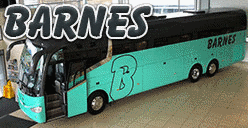In case you missed it see what’s in this section
Let's Talk
Absolute Essentials for Every Portable Watercolor Kit
Have you recently taken an interest in art and watercolor paints? A portable watercolor kit allows you to enjoy your interest on the road. Having your kit wherever you go means you can get to work whenever inspiration hits. Here are a few tips for creating a watercolor paint box when you are ready to get your hands wet.

1. Gather Materials
Gather the following materials to put your watercolor kit together:
- Heat gun
- Altoids tin
- Plastic trays
- Scissors
- Tin foil
- Rolling pin
- Hot water
- Watercolor
2. Tray and Tin
Empty and clean your tin and tray. Get InstaMorph moldable plastic, as you can reuse it. The plastic allows you to re-melt whatever you want. You can melt, thin, and cut them as you, please. Consider melting about a cup's worth.
3. Fitting Tray
Mold your melted plastic into several rolls and wrap them around the tray. Hot water comes in handy when you need to soften it. However, your best bet is to work as quickly as you can. Avoid using a heat gun to reheat your InstaMorph plastic, as it could melt your tray.
When you have InstaMorph all around your tray, start pressing into the bottom of your tin. Allow it to cool and harden for some time.
4. Lid/Palette
You’ll need a lid to keep your paint from dripping all over. This lid can serve as a palette as well. Roll out some of the InstaMorph melted plastic on tin foil. The thickness should be about 1/8’’. Add more if it isn’t thick enough.
Create an impression by pressing the tin onto your flattened melted plastic. Allow the plastic to cool, and cut it out within the impression line. Your cut pieces must fit perfectly within the tin.
5. Paper Towel
You need paper towels to watercolor. Fold a paper towel piece and trim the corners off. Ensure it fits perfectly in the space above the lid. Decorate the outside of your tin as you please.
6. Watercolors
Decide on the colors you'd like to incorporate in your tin. You'd be smart to include a wide variety of colors. If the tip of your bottle seems to have some liquid separation, use a paper towel to wipe a bit of it.
Shake your tin to ensure that your paint settles well into the tray. Get a suitable water brush and enjoy your watercolor set. If you are looking for some inspiration, purchase abstract paintings with Singulart.
The Best Watercolor Supplies for Beginners
Even with an excellent watercolor set, you need a few supplies to complete your kit. Whether you are a beginner or an experienced artist, here are a few of the basics:
Brushes
The best brushes for you depend on your personal needs and preferences. Most artists stick to specific brands. Different brush shapes and types produce different results. Therefore, they are all appropriate for different applications.
Soft nylon brushes are appropriate if you already have great control of your strokes. Softer bristles work when you don’t have excellent control yet. Goat and sable hair brushes are appropriate. However, sable gives you more control.
Masking Tape
Masking tape can adhere to and stretch your watercolor paper on rigid surfaces. This works best for smaller paintings. You'll need stronger tape and staples for larger paintings.
Masking Fluid
This is a latex-based fluid that you can use to preserve parts of your paper or previously applied color washes. Masking fluid gives you more control when layering colors. However, you must note that it can damage your paintbrush. Consider applying masking fluid with an old brush or toothpick. You can remove the fluid gently when it has served its purpose.
Graphite Pencil
Although some artists don’t need to sketch out their scenes or subjects, most do. You might need a graphite pencil for this. Its application is light and loose. It has an undeniable impact on the finished work.
Avoid harder pencils as they will likely cause depressions on the surface. This affects the application of your watercolor. Avoid going softer than '2B' or harder than '2H.' Note that the quality of your pencil sharpener is essential as well.
Watercolor Paper
Your brush and paints may be essential, but the surface you work on affects your final results too. Watercolor paper is excellent. It is absorbent so that you can use multiple applications.
There are various watercolor papers, and weight is the main difference. Usually, heavier paper costs less than light watercolor paper.
In conclusion, watercolor painting is an excellent pastime. Watercolors produce painting effects that you may not achieve with any other medium. However, what seems like a simple skill may require months of practice to execute. A portable watercolor kit can help you practice on the go. It can improve your skills and make the craft even more exciting.
Weather in Swindon
Listings





















